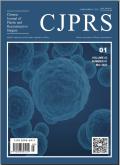Subcutaneous fat transplantation improves dermal adipose dysfunction by regulating autophagy and mitophagy
Chinese Journal of Plastic and Reconstructive Surgery
Pub Date : 2025-06-01
DOI:10.1016/j.cjprs.2025.06.002
引用次数: 0
Abstract
Background
Dermal white adipose tissue (dWAT) plays a crucial role in maintaining skin structure and functional homeostasis. Dysfunction of dWAT is closely associated with skin aging and fibrosis, with the impairment of autophagy and mitophagy considered the key mechanisms underlying adipose tissue dysfunction. Autologous fat transplantation (AFT) is widely used in plastic and aesthetic surgeries; however, its effects on dermal adipose function remain unclear.
Methods
In this study, a mouse model of dermal adipose dysfunction was established using the PPAR-γ inhibitor GW9662, followed by subcutaneous AFT. Dermal adipose thickness, lipid metabolism, autophagy, and mitophagy-related protein expression (PPAR-γ, PLIN-1, Beclin-1, LC3, Pink-1, and Parkin) were analyzed by H&E staining, immunohistochemistry, and qRT-PCR.
Results
GW9662 treatment significantly inhibited lipid metabolism and reduced the expression of autophagy- and mitophagy-related markers, indicating a possible impairment in these pathways. AFT upregulated these markers, suggesting a potential modulatory effect on autophagy and mitophagy.
Conclusion
Dermal adipose dysfunction induced by PPAR-γ inhibition may involve dysregulation of autophagy and mitophagy. Subcutaneous fat transplantation appeared to partially reverse these molecular alterations, thereby supporting its potential application in skin aging and adipose tissue restoration.
皮下脂肪移植通过调节自噬和线粒体自噬改善真皮脂肪功能障碍
真皮白色脂肪组织(wat)在维持皮肤结构和功能平衡中起着至关重要的作用。dWAT的功能障碍与皮肤老化和纤维化密切相关,自噬和线粒体自噬的损害被认为是脂肪组织功能障碍的关键机制。自体脂肪移植(AFT)广泛应用于整形和美容手术;然而,其对真皮脂肪功能的影响尚不清楚。方法采用PPAR-γ抑制剂GW9662建立小鼠真皮脂肪功能障碍模型,皮下注射AFT,通过H&;E染色、免疫组织化学、qRT-PCR分析真皮脂肪厚度、脂质代谢、自噬、自噬相关蛋白(PPAR-γ、PLIN-1、Beclin-1、LC3、粉色-1、Parkin)表达。结果gw9662显著抑制了脂质代谢,降低了自噬和有丝自噬相关标志物的表达,表明这些途径可能受到损害。AFT上调了这些标记物,表明其对自噬和有丝自噬具有潜在的调节作用。结论PPAR-γ抑制引起的真皮脂肪功能障碍可能与细胞自噬和线粒体自噬功能失调有关。皮下脂肪移植似乎部分逆转了这些分子改变,从而支持其在皮肤老化和脂肪组织修复方面的潜在应用。
本文章由计算机程序翻译,如有差异,请以英文原文为准。
求助全文
约1分钟内获得全文
求助全文
来源期刊

Chinese Journal of Plastic and Reconstructive Surgery
Surgery, Otorhinolaryngology and Facial Plastic Surgery, Pathology and Medical Technology, Transplantation
CiteScore
0.40
自引率
0.00%
发文量
115
审稿时长
55 days
 求助内容:
求助内容: 应助结果提醒方式:
应助结果提醒方式:


